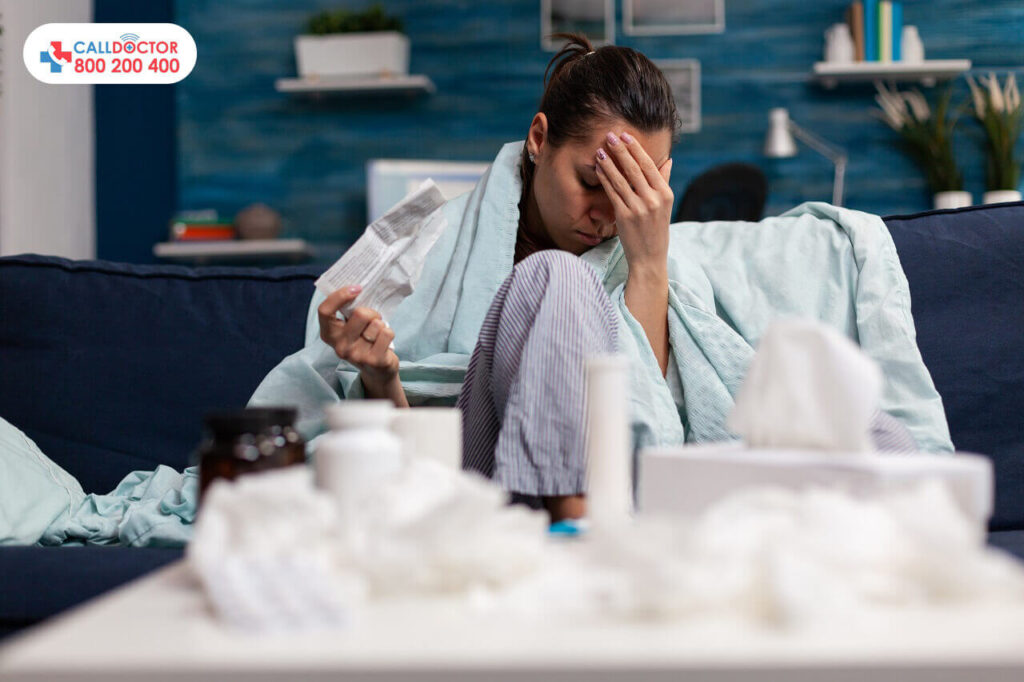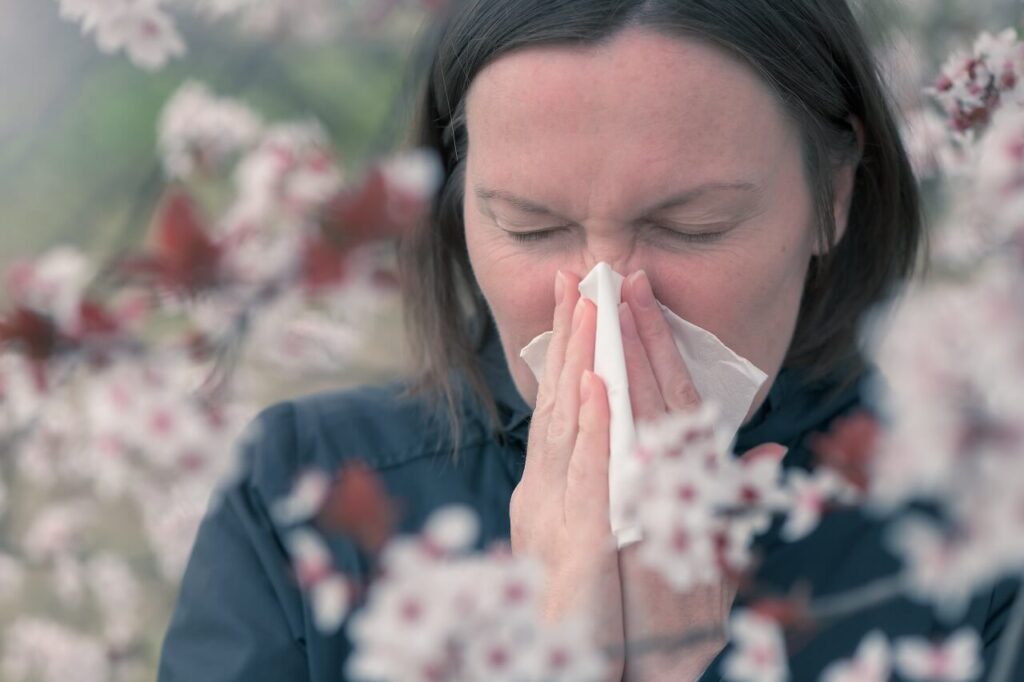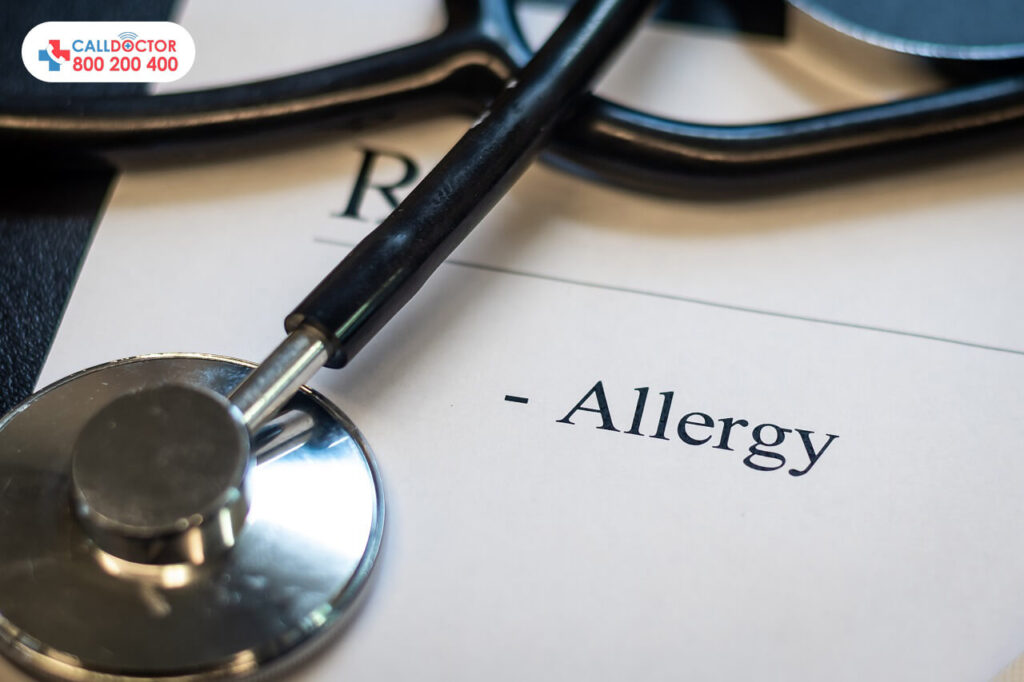Effective Precautions and Treatment for Seasonal allergies:
Spring season is often associated with allergies, as many people experience increased symptoms. It is because spring is when many plants bloom and release pollen into the air. Pollen is a common allergen that can cause allergic reactions in some people. If you’re among the millions of people with seasonal allergies, you must be careful and follow the precautions. You may suffer from seasonal allergies like hay fever and allergic rhinitis. But before you settle for plastic-made flowers and fake grass indoors, try some effortless ways to control seasonal allergies. Let’s learn more about dust and pollen allergies in the spring and their treatment.
Spring allergies begin in February and last until early summer in many UAE (United Arab Emirates) regions. Tree pollination starts early in the year, followed by grass and ragweed pollination later in the spring and summer. However, grass may pollinate for most of the year in tropical climates. Plants may begin pollinating earlier in the winter if the temperatures are mild. A wet spring can also encourage rapid plant growth and an increase in mold, prolonging symptoms into the fall.
✅️ Spring Allergies:
- Grass Pollen
- Weed Pollen
- Tree
Allergies in Dubai- Common Triggers & How to Manage Them
In Dubai, environmental factors such as dust storms, high pollen counts, and mold growth create a challenging atmosphere for allergy sufferers. Common allergens include dust mites, pollen, mold spores, and even certain food items. To manage these triggers, stay indoors during dust storms or high pollen counts and use air purifiers to reduce indoor allergens.
Call Doctor offers at-home allergy management services, including effective medications, nasal sprays, and immunotherapy, to help you breathe easily, no matter the season.
✅️ Summer Allergy:
- Fungus Spore
- Mold
- Grass Pollen
✅️ Allergies in the Fall and Winter:
- Weed
- Pollen
- Mold Dust
What are Seasonal Allergies’ Signs and Symptoms?
If you are allergic to airborne pollen spores, seasonal allergies can manifest at specific times of the year. They are distinct from so-called perennial allergies, which have symptoms that can last throughout the entire year. Because different plants release their pollen at other times, you might only experience symptoms once or twice a year, depending on which kind causes your reaction.
Find out about seasonal allergies, when you are most likely to get them, and how to treat your allergy symptoms so you can enjoy your indoor and outdoor activities. At Call Doctor, we provide the best allergy treatments in your comfort.

13 Common Symptoms of Spring Allergies Include:
Seasonal allergies may be to blame if your family experiences “cold” symptoms simultaneously yearly. The following are examples of allergy symptoms, which typically appear suddenly and persist as long as the individual is exposed to the allergen:
- Sneezing
- Runny or stuffy nose
- Itchy or watery eyes
- Scratchy throat or coughing
- Fatigue
- Headaches
- Ear congestion
- Sore throat, nose, or throat,
- Congestion
- Postnasal drip
- Asthma
- Redness of the skin
- Shortness of breath
Dust and Pollen Allergy- Understanding Symptoms & Prevention
Dust and pollen allergies often manifest as sneezing, a runny or stuffy nose, itchy eyes, or even asthma symptoms. Identifying these early signs is crucial for effective intervention. For prevention:
- Keep your living spaces clean by vacuuming regularly with a HEPA filter.
- Shower after outdoor activities to remove allergens from your skin and hair.
- Monitor pollen counts and stay indoors during high-alert days.
- Use dehumidifiers to reduce mold and dust mites in your home.
Early recognition and treatment can make a significant difference in managing your allergies and preventing severe reactions.
Various Allergies
Spring season is often associated with allergies as blooming plants release pollen into the air. If you’re among the millions experiencing seasonal allergies like hay fever or allergic rhinitis, follow these tips:
✔️ Spring Allergies:
- Grass Pollen
- Weed Pollen
- Tree Pollen
Sunny, windy days often worsen spring allergies as pollen spreads through the air.
✔️ Summer Allergy:
- Fungus Spores
- Mold
- Grass Pollen
✔️ Fall and Winter Allergies:
- Weed Pollen
- Mold
- Dust
What Are Seasonal Allergies’ Signs and Symptoms?
Seasonal allergies, distinct from perennial allergies, occur during specific times of the year. Symptoms include:
- Sneezing
- Runny or stuffy nose
- Itchy or watery eyes
- Scratchy throat or coughing
- Fatigue and headaches
- Congestion or postnasal drip
- Asthma or shortness of breath
Recognizing these symptoms early can help manage your allergies effectively.
When Does Pollen Allergy Season Begin?
For different people, allergy season can mean other things. In most cases, it depends on when the irritant or pollen that triggers an immune response is present in the air. If you are only allergic to one irritant, allergy season may last only a few weeks or months each year. However, if several different allergens cause your symptoms, you may be affected for two or more seasons. Concisely, depending on your triggers, any season can be “allergy season.”
Pollen Season in UAE: When Do Allergies Peak?
The pollen season in UAE typically begins in early spring and extends through the summer, with its peak varying based on the region and climate. Tree pollination kicks off the season, followed by grass and weed pollination later. Unlike temperate regions, the UAE’s tropical climate can result in extended grass pollination, often lasting throughout the year. Additionally, mild winters can trigger earlier pollination, while wet springs may promote mold growth. Understanding these patterns can help residents anticipate and manage allergy symptoms effectively, ensuring a better quality of life during peak seasons.
Reduce Your Exposure to Dust and Pollen Allergy Triggers
To minimize allergen exposure:
- Stay indoors on dry, windy days.
- Avoid hanging clothes outdoors.
- Wear face masks during gardening or outdoor chores.
- Keep doors and windows closed during peak pollen times.
- Monitor pollen counts, especially during cooler months (October to April).
- Keep windows closed during peak pollen times to prevent allergens from entering your home.
- Use air purifiers and clean AC filters regularly to improve indoor air quality.
- Wear sunglasses outdoors to protect your eyes from pollen.
- Shower after being outside to remove pollen from your skin and hair.
- Use over-the-counter antihistamines or nasal sprays for symptom relief.
- Consult a doctor if symptoms persist or worsen.
- Wear a mask outdoors during high pollen days to reduce inhalation.
- Using air purifiers and vacuuming regularly with HEPA filters can also help reduce indoor allergens.

How Are Seasonal Allergies Treated?
Seasonal allergies, often triggered by dust, pollen, and other environmental allergens, can be a significant source of discomfort. Fortunately, there are several effective ways to manage and treat these allergies. Here’s a detailed look at the most common treatment options:
1. Avoiding Allergens: Prevention is Key
The first step in managing seasonal allergies is to minimize exposure to allergens. While it’s impossible to avoid them entirely, these strategies can help:
- Stay Indoors During High Pollen Counts
Check local pollen forecasts and limit outdoor activities when counts are high, especially on windy days.
- Keep Windows Closed
Prevent pollen from entering your home by keeping windows and doors shut, particularly during peak pollen hours (early morning and late afternoon).
- Use Air Purifiers
HEPA air purifiers can help filter out pollen, dust, and other allergens from indoor air.
- Shower and Change Clothes After Being Outdoors
Pollen can cling to your hair, skin, and clothing. Washing up after being outside can help remove allergens.
- Clean Regularly
Dust and vacuum your home frequently using a damp cloth and a HEPA filter vacuum to reduce dust mites and other indoor allergens.
2. Medications for Allergy Relief (consult with your doctor first)
When avoidance isn’t enough, medications can provide effective relief from allergy symptoms. Common options include:
- Antihistamines
These block the effects of histamine, the chemical responsible for allergy symptoms like sneezing, itching, and runny nose. Over-the-counter options include cetirizine (Zyrtec), loratadine (Claritin), and fexofenadine (Allegra).
- Decongestants
These help reduce nasal congestion and sinus pressure. They are available as pills, liquids, or nasal sprays (e.g., pseudoephedrine or oxymetazoline). Note: Nasal spray decongestants should not be used for more than 3 days to avoid rebound congestion.
- Nasal Corticosteroids
These prescriptions or over-the-counter sprays (e.g., fluticasone, budesonide) reduce inflammation in the nasal passages and are highly effective for treating sneezing, itching, and congestion.
- Eye Drops
Antihistamine or mast cell stabilizer eye drops can relieve itchy, watery eyes caused by allergies.
3. Nasal Saline Rinses
A nasal saline rinse can help clear allergens like pollen and dust from your nasal passages, reducing congestion and irritation. Use a neti pot or saline spray with distilled or sterilized water to flush out your sinuses. This simple, drug-free remedy can be used daily for relief.
4. Allergy Shots (Immunotherapy)
For long-term relief, allergy shots (immunotherapy) can be a game-changer. This treatment involves regular injections of small amounts of allergens to gradually desensitize your immune system. Over time, this reduces your sensitivity to allergens and can significantly lessen or even eliminate symptoms. Immunotherapy is especially helpful for people with severe allergies or those who don’t respond well to medications.
5. Lifestyle Adjustments
In addition to medical treatments, small lifestyle changes can make a big difference:
- Wear Sunglasses
Protect your eyes from pollen by wearing sunglasses when outdoors.
- Wash Bedding Frequently
Use hypoallergenic pillowcases and wash bedding in hot water weekly to reduce dust mites.
- Keep Pets Clean
If you have pets, bathe them regularly to remove pollen and dander from their fur.
- Stay Hydrated
Drinking plenty of water can help thin mucus and ease congestion.
6. When to See a Doctor
If your allergy symptoms are severe, persistent, or interfere with your daily life, it’s important to consult a healthcare provider. They can help identify your specific triggers through allergy testing and recommend a personalized treatment plan, which may include prescription medications or immunotherapy.
At Call Doctor, we offer home healthcare services, including allergy consultations, treatments, and preventive care, ensuring your comfort and safety.

Be safe, be healthy, and be happy:
Many safe and effective allergy medicines can be used by taking precautions to reduce exposure to allergy triggers to target the symptoms you have the most trouble with. Nowadays, oral antihistamines, nose sprays, and eye drops are the most common over-the-counter allergy medications. Allergy sufferers can always count on our doctors for assistance. You can get in touch with us by sending us an email or calling us on 800 200 400.
FAQ’s
1. What causes seasonal allergies in the UAE?
Seasonal allergies in the UAE are primarily caused by airborne allergens such as tree pollen, grass pollen, and dust. These allergens are released into the air during the blooming season, particularly in spring and early summer. Additionally, dust storms and mold can worsen symptoms during certain times of the year.
2. How can I tell if my symptoms are caused by allergies or a cold?
Allergy symptoms often include sneezing, itchy or watery eyes, a runny or stuffy nose, and a scratchy throat, typically triggered by exposure to allergens. Unlike a cold, allergy symptoms persist for a longer period and are often seasonal. If your symptoms appear around the same time each year, it’s likely due to allergies. If you’re unsure, it’s best to consult a healthcare provider.
3. How can I reduce my exposure to pollen and dust in Dubai?
To minimize exposure, consider staying indoors during dry and windy days when pollen counts are high. Keep windows and doors closed, especially early in the morning when pollen levels are highest. Using air purifiers with HEPA filters indoors and wearing face masks while gardening or cleaning outdoors can also help reduce exposure.
4. Can seasonal allergies be treated without medication?
While medications like antihistamines, nasal sprays, and decongestants are commonly used to treat seasonal allergies, natural remedies can help manage symptoms. Using a saline nasal rinse, staying hydrated, and consuming local honey may offer some relief. However, it’s important to consult a healthcare provider before opting for non-medication treatments.
5. When should I seek medical attention for my allergies?
If your allergy symptoms worsen or interfere with daily activities, or if over-the-counter treatments aren’t effective, it’s time to consult a healthcare professional. Additionally, if you experience severe symptoms like shortness of breath, chest tightness, or swelling in the throat, seek immediate medical attention, as these could indicate a more serious allergic reaction.




